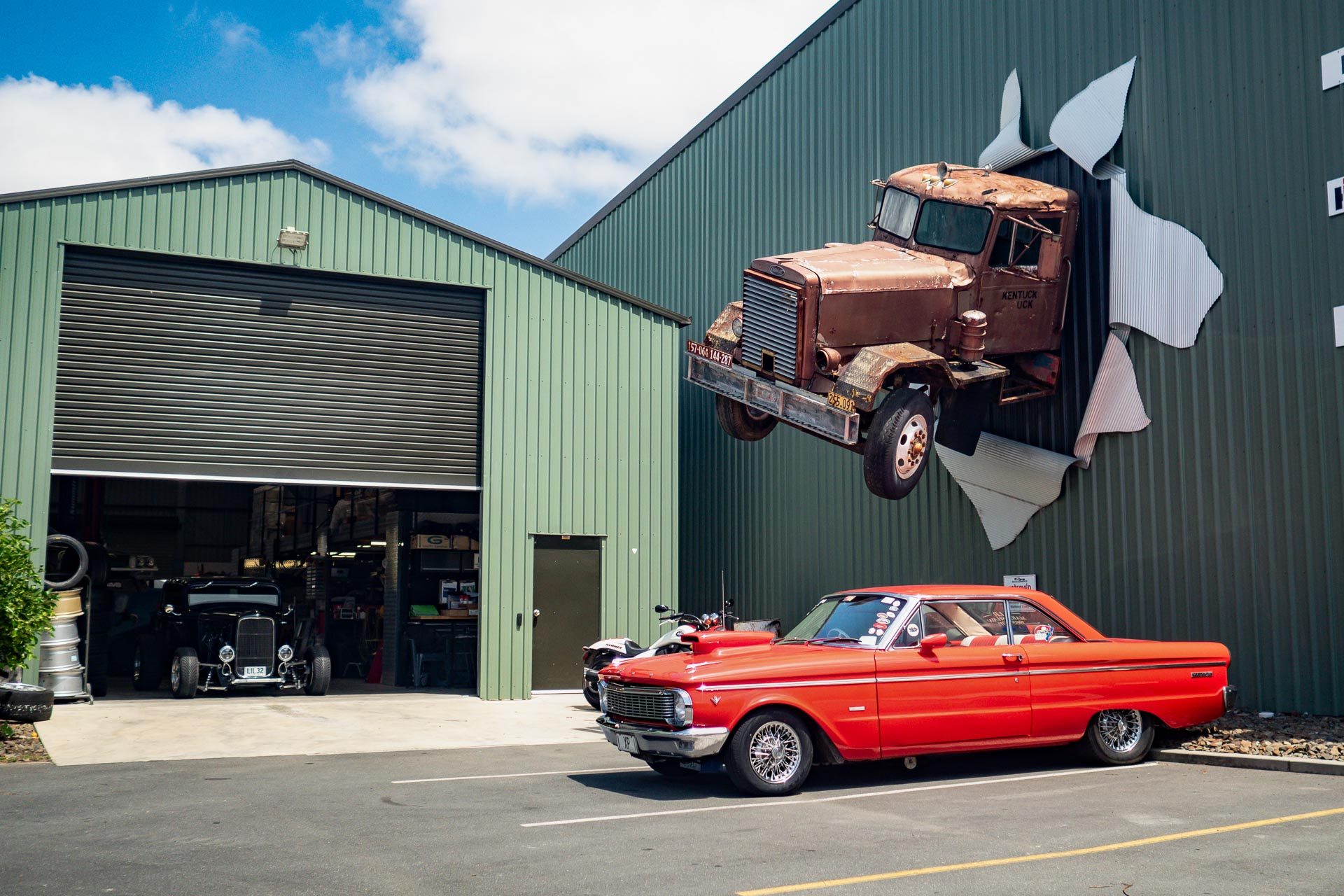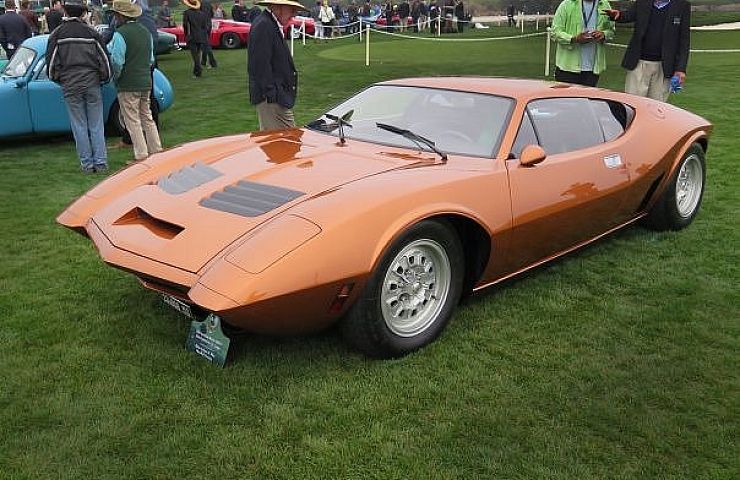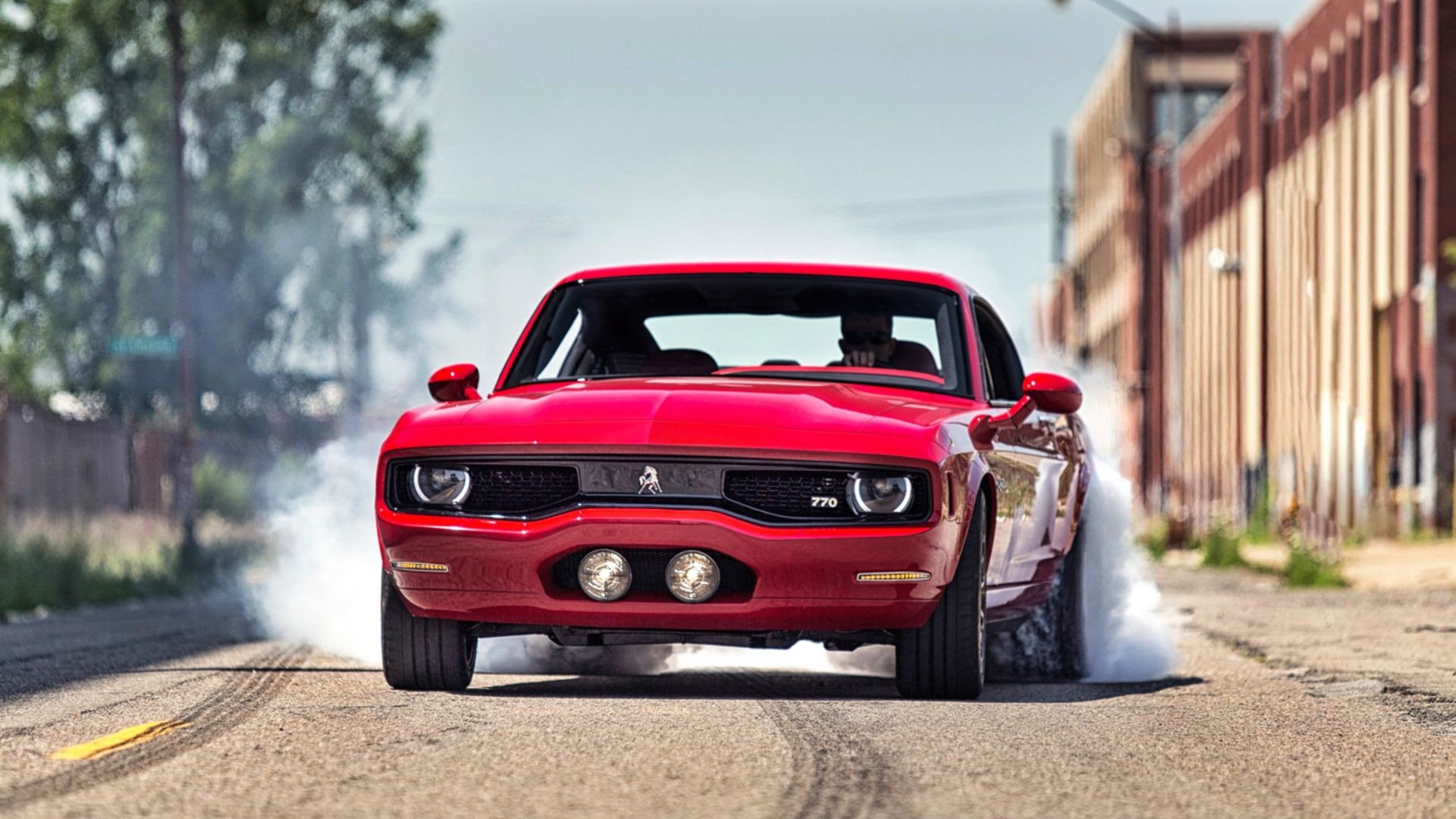You would have thought that a bike that quickly became known as the ‘widow maker’ would put off a young, relatively inexperienced rider like myself, but it didn’t. The scare stories made it more appealing, the rumours of power wheelies made it exciting and the drone of a V-Twin with race pipes on full chat made it sound intoxicating. And so began a love affair with a bike that I can only describe as an Alfa Romeo on two wheels; brilliant when it works and a dog’s dinner when it doesn’t. Yes, it’s the legendary Suzuki TL1000S, or to be more precise TL1000SV, the original head-banging full power model.
My TL ownership began at a service station on the M25 in 2004, following a chat with the owner on eBay. I had placed a listing asking to part-ex my bargain Kawasaki ZX6R J1 that I had bought to get me to and from university for a bargain £2500 for a TL1000S. You read that right, a 4 year old bike with only 20,000 miles for £2500 from a dealer, but that is another story.
The TL had been my dream bike for many years, ever since its launch in 1997. It was the most powerful one litre V-twin of its time, kicking out 125bhp which was far more than its nearest rival the Ducati 916, the most famous motorbike of them all. The press raved about the engine, its effortless power wheelies, its fantastic handling and its revolutionary rotary damper rear suspension that had been inspired by the world of Formula 1. It walked all over Ducati.
Unfortunately the praise didn’t last long. Rumours of massive tankslappers on bumpy uneven roads began to circulate, people were getting hurt and the inevitable happened… a journalist was killed. Blame was attributed to the rotary damper. Only a teaspoon of oil was used, quickly resulting in the shock overheating when the going got tough and turning the bike into a giant pogo stick. It became known as the Widow Maker.
To address the problem Suzuki fitted an un-adjustable steering dampener, which helped the problem but also killed the handling. In later models they also started reducing the power, but there is some debate as to whether this was to give its ‘bigger’ brother the fully faired TL1000R the edge, but in reality the R was heavier and slower.
The problems didn’t stop there however… the fuel tank leaked in warm weather, the frames cracked resulting in a mass recall for a new frame, the fuel injection was jerky, the electrics were next to useless and the chain became too tight over bumps and had to be run slack.
You may now be wondering why the hell I wanted such a bike! Well for me it was a straight forward decision. I like the underdog, I liked the idea of owning a bike that nobody else wanted because it was too dangerous, and the reality was the bikes weren’t the problem. They just weren’t setup properly from the factory and people weren’t respecting its limits. In addition, various aftermarket suspension options from Maxton were available and other problems are easily fixed.
Waiting at the services on the M25 on a beautiful summer’s day, I could hear the bellowing sound of a v-twin with race pipes coming up the slip road towards me. It sounded fantastic! The red TL looked stunning in the sun, with its gold wheels, black menacing engine and polished race pipes. The owner immediately jumped on the ZX6 and squealed with delight, “this is exactly what I want, I hate the TL, I want something easy and modern”.
Alarm bells should have, but didn’t ring. I knew the TL1000S was a marmite bike. I gave it a thorough going over (or so I thought) and carried out the usual checks. The engine purred away, all the electrics were working and it revved freely. No leaks, no cracks, new frame, good chain, good tyres, comfy, sounds top… I never lusted after a bike so much.
We signed the paperwork as quickly as possible and he screamed away on the Kwack. I didn’t even look at him leave, although the ZX6r was a fantastic bike I just couldn’t get attached to it. I kitted up, swung my leg over the TL and fired it up.
It’s not like an inline four, as you sit there idling the whole bike vibrates and pulses with the engine beat, getting faster as you rev it. The riding position is more head down than the ZX6 but comfortable and the whole bike feels very narrow. Good to go I let out the clutch and joined the M25.
I gave it a fistful, the bike jumped forward, the front went light, 100mph came up in seconds and the sweetest sound was emitted from the pipes. The low down torque was sublime, giving it more urgency than the Kwack and it felt stronger at the top. Whether it was faster or not is debatable because of the ZX6’s screaming top end, but overtakes were effortless.
My joy was short lived. The steering felt heavy and the bike didn’t want to change direction. At first I thought this was down to the massive stock steering dampener across the top yoke, but after moving lanes the bike wobbled over the white lines. I pulled in at the next services and checked the tyres. They were both as flat as a pancake. The previous owner complained about the poor handling, I wonder why?
With both tyres pumped up, the bike was transformed and handled reasonably well on the bends once I had left the motorway but as I began to gel with the bike, I noticed the various well known problems. The bike felt rear heavy and pushed the front in fast bends making me run wide, the steering dampener removed any feel from the front end and reduced responsiveness, the rear shock crashed over bumps (combination of too tight a chain and the rotary damper) and when riding through towns the bike was horribly jerky on a part throttle. So jerky in fact it was like riding a bucking bronco! I could feel that if I pushed the bike too hard on a bumpy road, I’d be thrown skywards before I could say “Oh… “. I had some work to do…
My first task was to fix the jerky fuel injection. This was a simple case of setting up the TPS (Throttle Position Sensor) properly, as Suzuki didn’t bother at the factory. It’s literally a 5 minute job and transforms the bike. Within seconds of riding I could feel the bike was smooth as silk, there was still some transmission lash, but that’s v-twin charm.
Next on the list was to sort the handling. I read numerous forums, tech sites and talked to various suspension specialists and quickly realised the bike was just poorly setup from the factory. It didn’t need money throwing at it, it just needed a few tweaks. I immediately dumped the steering dampener (I was told by various bikers I’d die), raised the forks through the yoke 5mm (told by various bikers I’d be even more dead) to put more weight on the front, tweaked the front and rear suspension settings and dumped the 190 rear tyre for a 180 to speed up the steering.
I also adjusted the chain properly, as due to the alignment of the rear swingarm compared to the output shaft, if you adjust the chain as you would on any other bike, it would go bow tight over a bump and potentially lock the wheel or wreck the engine.
One last modification was to fit better brakes from the Hayabusa, Galfer wavy discs and braided hoses to improve the spongy brakes. At low speed they are average, but at higher speeds they are superbly strong and two finger braking is all that’s required.
The first ride after the tweaks was sublime. All the scare stories I had heard and read about the Tl1000S just didn’t apply to the bike I was sat on. It tuned faster than the ZX6r, I could hit any apex I wanted by thought alone and there was no hint of a tankslapper, even if I was ham-fisted and going hell for leather. That ride was one of the best I’ve ever had.
A couple of days later I had it on the dyno, where it was tweaked from an already impressive 119rwbhp to 126rwbhp (later bikes produced around 100bhp), it was now the best bike in the world. Or it was when it worked 100%… On hot sunny days, after every ride I’d come back and find fuel leaking from the tank and dripping slowly down the side of the bike. Despite fitting later model fuel tanks, trying sealants etc, the problem was never fully fixed. I often thought about what would happen if fuel dripped onto the exhaust as I was riding, sending me skywards in a large fireball.
There were also gremlins in the electrics. If it rained the bike wouldn’t work. People often say how unreliable Italian bikes are, but this Japanese bike proved just as bad. Rain would seep in behind the front spark plug lead causing the front cylinder to cut out. You’d find yourself riding along and suddenly being launched out of your seat as it cut out then back in again. My neighbour also literally nearly punched me, because I’d have to sit there revving it after a wet ride until the water evaporated, otherwise the bike wouldn’t start in the morning. Sealant cured it… sometimes.
Other electrics were also problematic, with melting connections being a regular occurrence resulting in short circuits, or if you were really unlucky you’d be riding along a road in the middle of nowhere in the dark, and the headlight would fail.
The straw that broke the camel’s back however was when the out-shaft bearing failed. This was most likely caused by the previous owner having the chain too tight and resulted in an £800 repair bill. Most bikes you can remove the bearing from the outside, but on the TL1000S you have to split the cases then wait two months for parts. Soon after fixing it, I sold it after 2 years and 20,000 miles of ownership.
Do I regret selling it? Well I’m lucky enough to be back with my old bike 8 years later for one last ride. Since selling it I’ve owned a ZX9r and the monster that is the Kawasaki ZX12r (which I crashed on ice 8 months ago, oops!), both are significantly faster than the TL with 140bhp and 175bhp respectively, but did they have the same character? They were more reliable for a start, having covered 75,000 miles and 30,000 miles without a hitch. My biggest regret about selling the TL1000SV though is that they are now worth twice the amount I sold mine for!
Seeing my old bike again certainly gives me goose bumps. It still looks fantastic, despite starting to show its 17 years with flaking engine paint and the odd bit of corrosion, and although the design is now outdated it still looks menacing. It’s also been fitted with the optional lower fairing, which I’m not sure if I like.
Slinging a leg over the bike feels very old school. It feels dense and the riding position isn’t as comfortable as a more modern bike with a narrower seat. The fittings and fixtures look cheaper and don’t fit together as well as the luxurious ZX12r. The clocks are also very ’90s and minimalist, but they tell you everything you need for the ride ahead.
Starting the TL1000S up again, the sound is intoxicating. I will always love the sound of a v-twin, especially on full chat, it offends no-one unlike a screaming four. Sitting there and revving the engine however is when you really start to notice its age, the way it vibrates feels very unrefined, it feels as though the engine is loose in the bike and it’s about to fall apart. It won’t though, it gives it character.
Setting off at low speed, you notice the difference between more modern fuel injection and the TL’s, even though it’s a v-twin. The ride is snatchy, almost cumbersome, you have to think about what you’re doing otherwise you’ll stall easily. But as you wind the engine up, the bike comes alive and it feels just as good as any modern engine. There is relentless torque and power right to the red-line and the noise is sublime. Heading into a bend, the suspension feels rough and ready, crashing at the rear and feeling underdamped at the front. This might just be case of needing to fit the Maxton rear and modern internals on the front to improve things. The handling is still tight though and it holds a good line, tracking the road exactly where you want it. The braking is also still very impressive as the setup hasn’t changed since my ownership.
Riding my old TL1000SV again has been fantastic, but it doesn’t feel like the animal it once was. It is a bike you can grab by the scruff of the neck however and ride to within an inch of its life, while still going at a reasonable and not too illegal speed. The power wheelies don’t happen as easily as I remember (probably because I’m heavier) It’s full of character and is still one of the best sounding bikes on the road and despite the horror stories is also relatively benign by today’s standards.
Would I own one again? Yes, it was the best most enjoyable bike I’ve ever owned, but I would bring it up to date with much more modern suspension and it would have to have all the other problems already ironed out. The engine lives on in other motorcycles, but none have the same presence. It would be the perfect bike for my man shed alongside my next dream project, a Ducati Café Racer, and having a cult status, earlier full power models are going up in value making it a great investment.






More Stories
Are Thumpstar Pit Bikes Reliable?
Subaru Impreza – What’s Latest for 2012?
Two Brothers Racing – Evolution of a Motorcycle Exhaust Manufacturer